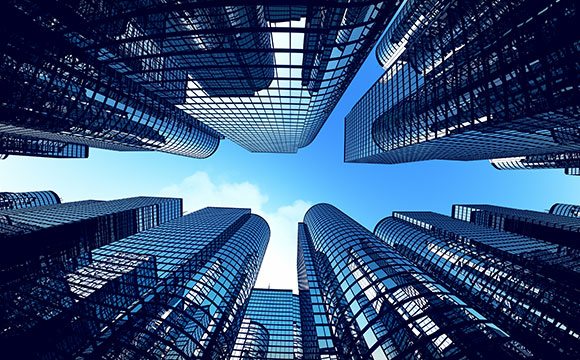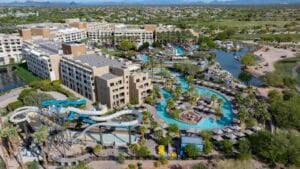Strong economic growth, abundant capital, and a favorable supply and demand environment led to broadly stable capitalization rates for U.S. commercial real estate assets in the second half of 2018, according to the latest research from global property advisor CBRE.
The CBRE North America Cap Rate Survey provides insights on movements for the major property asset classes. Cap rates remained generally unchanged across the sectors in H2 2018. Industrial cap rates tightened marginally across all segments, while office, multifamily and hotel cap rates were generally stable. Continued cap rate stability is expected in H1 2019, with multifamily and retail sectors experiencing the most mixed sentiment.
“Investment activity remains robust, driven by a strong economy, significant amounts of capital, and a sense that supply and demand in real estate markets is very well balanced. The U.S. remains the best performing of the advanced economies, due to job growth and earlier tax cuts. Cap rates were very stable in 2018, and pricing firm. We see this situation continuing in 2019, with a weaker global economy putting downward pressure on the 10-year treasury. Real estate spreads remain very competitive,” said Richard Barkham, Global Chief Economist, CBRE.
Among the major commercial real estate sectors:
• Office cap rates increased by a greater amount for CBD properties than suburban in H2 2018, especially in Tier I markets. Suburban cap rates were relatively flat across all classes and investment strategies. Cap rates are expected to remain unchanged in approximately three-quarters of CBD markets and two-thirds of suburban markets in H1 2019.
“Phoenix office pricing is still 20 percent below peak and assets are trading below replacement cost, making the metro increasingly attractive to investors from around the globe. Well-positioned office properties across metro Phoenix remain extremely liquid with cap rate compression for long-term investment grade single-tenant and core “main and main” multi-tenant office properties. Looking ahead, Phoenix will continue to see a healthy flow of new capital into the market,” said Barry Gabel, Executive Vice President, Capital Markets, CBRE.
• Multifamily cap rates and returns on cost remained at historically low levels in H2 2018. Cap rates for infill stabilized assets averaged 5.26% and expected returns on cost for infill value-add acquisitions averaged 6.00%. Suburban stabilized assets priced at 5.56% on average, while expected returns on costs averaged 6.30%. Cap rates and returns on cost edged up slightly from H1 2018.
“Strong fundamentals in Phoenix relative to other major metros across the country are resulting in increasing capital flows into the Valley that is putting downward pressure on cap rates locally,” said Matt Pesch, Senior Vice President, Capital Markets, CBRE.
• Industrial and logistics cap rates declined by 7 bps to 6.34% for acquisitions of stabilized assets in H2 2018. Cap rates for stabilized properties of all classes fell, with Class A industrial properties declining 7 bps to 5.07%, Class B falling 13 bps to 5.98%, and Class C down 2 bps to 8.02%. Expected returns on cost for value-add assets decreased 2 bps overall to 7.45%.
“Strong market fundamentals—tightening vacancy, robust tenant demand and rent growth—are attracting investors both domestic and from all over the world. While cap rates on year one NOI continue to compress, investors are still extremely attracted to the sector given the expectations for increasing returns through rental rate growth over the hold period,” said Jack Fraker, Global Head of Industrial & Logistics, CBRE Capital Markets.
• Hotel cap rates were mostly stable in H2 2018, with increases of only 3 bps or less on average for all CBD and suburban submarkets. The CBD hotel cap rate remained below 8% (7.97%) and was under the long-run average. Suburban cap rates moved up 1 bp to 8.49%. Most market segments and geographic areas had quite modest, single-digit upticks or downticks in cap rates ranging from minus 2 to plus 9 bps.
“Hotel sector fundamentals have offered few, if any, surprises. This combined with continued high liquidity in the debt markets has allowed for relative stability in cap rates. While one might anticipate upward pressure because of late cycle fundamentals and some volatility in the capital markets, the weight of capital focused on the sector has kept cap rates in check,” said Kevin Mallory, Global Head and Senior Managing Director, CBRE Hotels.
• Retail cap rates for both stabilized and value-add properties increased for all retail segments in H2 2018. Recent store closure announcements have disproportionately affected the power center segment, with the average cap rate increasing by 13 bps to 8.42% in H2 2018. Demand for high-quality assets was strong, with cap rates for Class A product in all three retail sectors the lowest, ranging from 4.83% to 8.42%. Cap rates for both power and neighborhood/community center stabilized properties are expected to remain unchanged or increase slightly in H1 2019.




